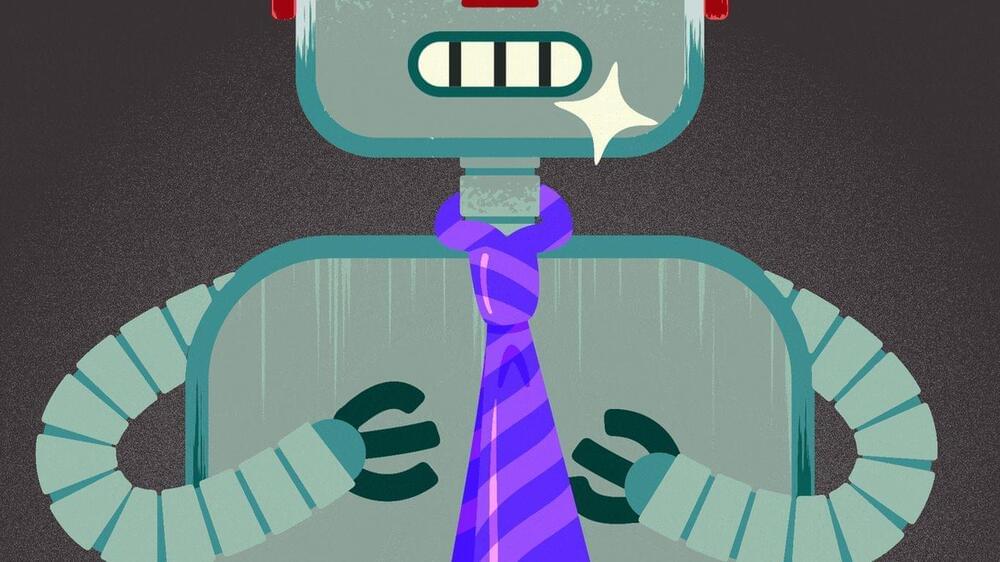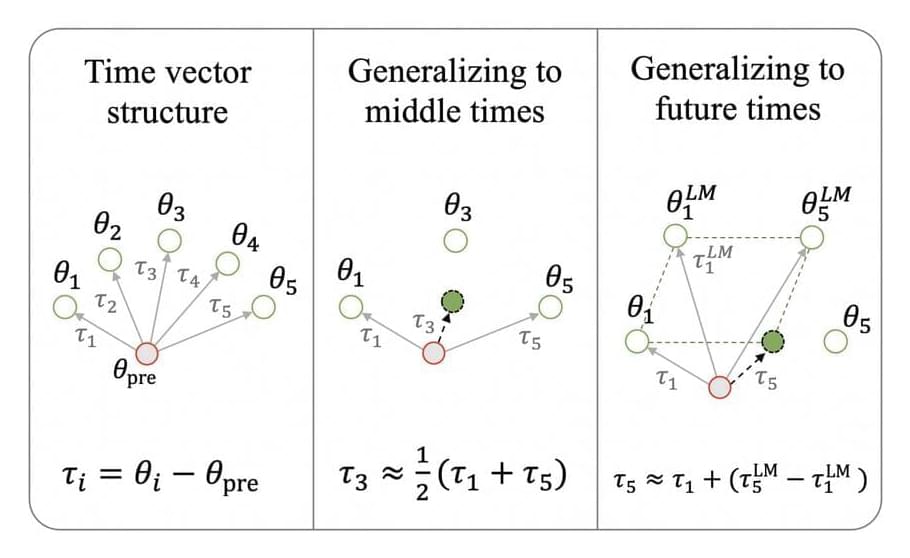Slime robots can go places that other robots can’t and could have valuable applications in everything from healthcare to the utilities sector.
Category: robotics/AI – Page 842

Bill Gates predicts a ‘massive technology boom’ from AI coming soon
The use of artificial intelligence by the general population in developed countries such as the US to a “significant” degree will start to take place in the next 18 to 24 months, according to Microsoft co-founder and philanthropist Bill Gates in his year-end letter released last week.
The impact on things such as productivity and innovation could be unprecedented, says Gates.
“Artificial intelligence is about to accelerate the rate of new discoveries at a pace we’ve never seen before,” wrote Gates on his blog.
Startups: AI chatbots will eventually become your coworkers
Comment Large language models seem poised to evolve from AI chatbots generating synthetic content on your screen to virtual agents that are capable of performing actions on your PC right at your desk.
Instead of answering questions or creating animated stickers, AI will soon be able to follow instructions and help you tick stuff off your to-do list at work. A new wave of AI agent startups are building products that can automate parts of your day-to-day employment. Correctly, one hopes.
Some, like Lindy, are building next-generation personal assistants that CEO Flo Crivello envisions doing all the tedious administrative chores that suck up people’s time. “People are always worried that robots are stealing people’s jobs. I think it’s people who’ve been stealing robots’ jobs,” he said during a presentation at the AI Engineer Summit in San Francisco in October.

Talking to Animals with Artificial Intelligence
Cat meowing]
Harper: Well, powerful new technologies are helping researchers decode animal communication. And even begin to talk back to nonhumans.
Bushwick: Advanced sensors and artificial intelligence might have us at the brink of interspecies communication.
The next generation of Tesla’s humanoid robot makes its debut | Kurt the CyberGuy
Tesla unveils Optimus Gen 2, a lighter, faster, and smoother humanoid robot that can assist humans in various tasks.\
https://cyberguy.com/future-tech/next…\
\
For more of my tech tips \& security alerts, subscribe to my free CyberGuy Report Newsletter\
Cyberguy.com/newsletter\
\
Ask Kurt a question or let us know what stories you’d like us to cover\
CyberGuy.com/Contact\
\
***********\
\
Answers to the most asked CyberGuy questions:\
\
● What is the best way to protect your Mac, Windows, iPhone, and Android devices from getting hacked? https://cyberguy.com/software/best-an… \
\
● What is the best way to stay private, secure, and anonymous while browsing the web?\
https://cyberguy.com/privacy/best-vpns/\
\
● How can I get rid of robocalls with apps and data removal services?\
https://cyberguy.com/how-to/how-to-ge…\
\
***********\
\
Related: \
\
Best Antivirus Security Software\
https://cyberguy.com/LockUpYourTech\
\
Best VPNs for Browsing the Internet Privately\
https://cyberguy.com/VPN\
\
How to Back-up your Devices the right way\
https://cyberguy.com/HowoBackupDevices\
\
***********\
\
http://cyberguy.com/newsletter\
\
***********\
\
Follow me here:\
http://www.cyberguy.com\
/ cyberguyofficial \
/ cyberguy \
/ kurtthecyberguy \
\
#TeslaRobot\
#OptimusGen2\
#HumanoidRobotics\
#TechInnovation\
#TechNews\
#TechnologyNews\
#Innovation\
#FutureTech\
\
***\
\
ABOUT CYBERGUY — AMERICA’S TECH AUTHORITY\
\
Kurt \

The New York Times is suing OpenAI over copyright breaches, here’s what you need to know
The New York Times has filed a civil lawsuit against OpenAI and Microsoft in Federal District Court in Manhattan Wednesday, claiming that the technology companies used the newspaper’s content to train its artificial intelligence, breaching copyright protections.
The Times does not ask for a specific dollar amount but says that the lawsuit, “seeks to hold them (the defendants) responsible for the billions of dollars in statutory and actual damages that they owe for the unlawful copying and use of The Times’s uniquely valuable works.”
Neither company has responded to the lawsuit publicly. USA Today has reached out to both Microsoft and OpenAI and will update this story if we receive a response.

Generative AI will have another wild ride in 2024
2024 will be the year the AI industry gets serious about trying to deliver results across a wide slice of business and life, moving beyond the hype surrounding the successes of ChatGPT and chipmaker Nvidia.
From health innovation to election misinformation, here’s what experts predict for AI in the coming year.

Apple’s iPhone Design Chief Enlisted by Jony Ive, Sam Altman to Work on AI Devices
Legendary designer Jony Ive and OpenAI’s Sam Altman are enlisting an Apple Inc. veteran to work on a new artificial intelligence hardware project, aiming to create devices with the latest capabilities.
As part of the effort, outgoing Apple executive Tang Tan will join Ive’s design firm LoveFrom, which will shape the look and capabilities of the new products, according to people familiar with the matter. Altman, an executive who has become the face of modern AI, plans to provide the software underpinnings, said the people, who asked not to be identified because the endeavor isn’t public.
The work marks one of the most ambitious efforts undertaken by Ive since he left Apple in 2019 to create LoveFrom. The iconic designer is famous for the products he helped devise under Apple co-founder Steve Jobs, including the iMac, iPhone and iPad. His hope is to turn the AI device work into a new company, but development of the products remains at an early stage, according to the people. The efforts so far are focused on hiring talent and creating concepts.

Researchers from the University of Washington and Allen Institute for AI Introduce Time Vectors: A Simple Tool to Customize Language Models to New Time Periods
Computational linguistics focuses on developing advanced language models capable of understanding and generating human language. This dynamic field integrates the latest in machine learning and artificial intelligence, striving to create models that grasp the intricacies of language. A crucial aspect of this discipline is adapting these models to accommodate the ever-changing nature of language, influenced by cultural, social, and technological shifts.
One major issue in this area is the temporal misalignment between the data used to train language models and the ever-evolving nature of language. Over time, the language used in various domains can change significantly, which leads to the models trained on past data becoming less effective. This problem is compounded by the fact that acquiring and integrating new, relevant data into these models is often complex and resource-intensive.
Current methods to tackle this challenge primarily involve updating language models with new data as it becomes available. Techniques like dynamic evaluation and continuous pretraining keep these models relevant over time. However, these approaches have limitations, such as the risk of models forgetting previously learned information or requiring extensive new data for effective updating.

The Times Sues OpenAI and Microsoft Over A.I. Use of Copyrighted Work
The Times said OpenAI and Microsoft are advancing their technology through the “unlawful use of The Times’s work to create artificial intelligence products that compete with it” and “threatens The Times’s ability to provide that service”
The New York Times sued OpenAI and Microsoft for copyright infringement on Wednesday, opening a new front in the increasingly intense legal battle over the unauthorized use of published work to train artificial intelligence technologies.
The Times is the first major American media organization to sue the companies, the creators of ChatGPT and other popular A.I. platforms, over copyright issues associated with its written works. The lawsuit, filed in Federal District Court in Manhattan, contends that millions of articles published by The Times were used to train automated chatbots that now compete with the news outlet as a source of reliable information.
The suit does not include an exact monetary demand. But it says the defendants should be held responsible for “billions of dollars in statutory and actual damages” related to the “unlawful copying and use of The Times’s uniquely valuable works.” It also calls for the companies to destroy any chatbot models and training data that use copyrighted material from The Times.